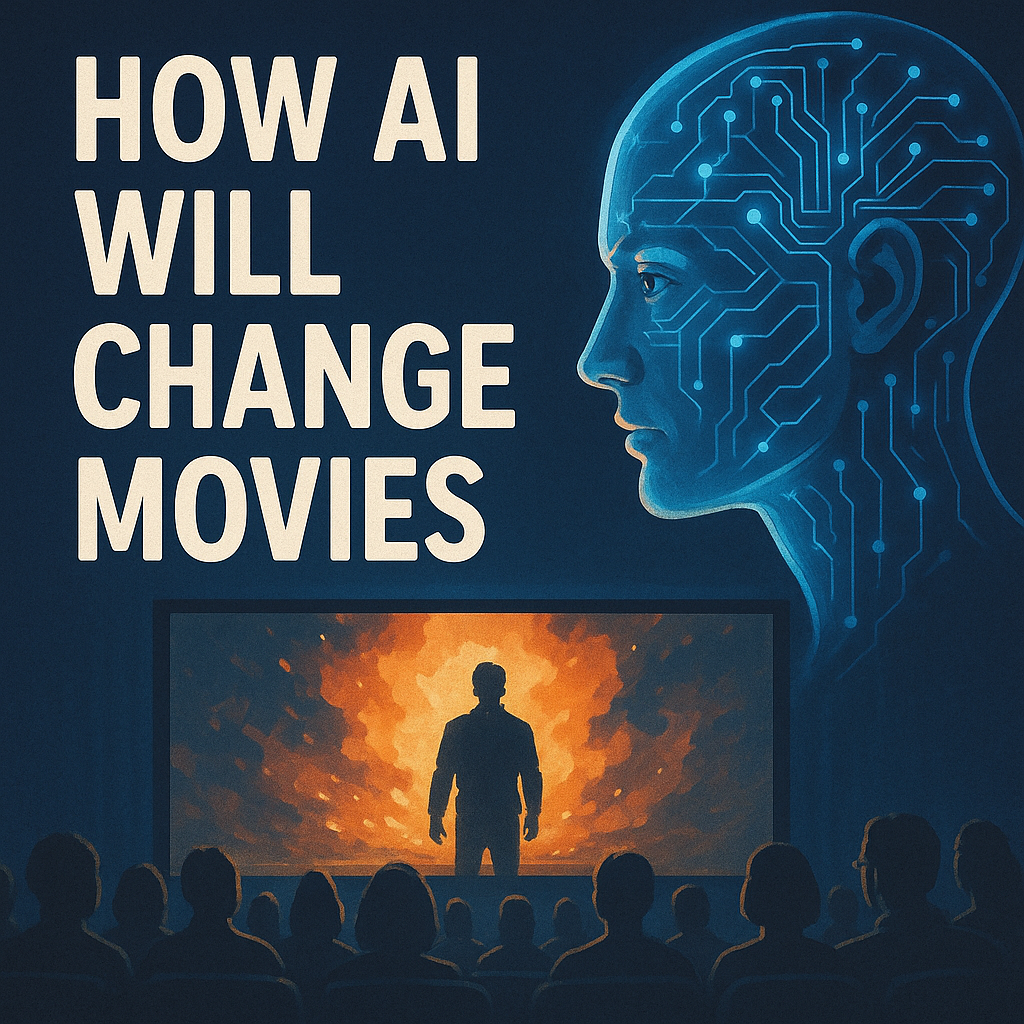
AI is set to fundamentally transform the movie and entertainment industry, reshaping production, distribution, and audience engagement in profound ways. Below is a detailed exploration of its impact, with a focus on the specific advancements you mentioned—AI figures replacing actors and the creation of multiple plot pathways—alongside other significant developments.
AI Figures Replacing Actors
AI’s ability to generate photorealistic digital characters is one of the most disruptive changes on the horizon. Using advanced machine learning, deepfake technology, and motion capture, AI can create virtual actors that mimic human performance with uncanny accuracy. These AI figures can be programmed with unique personalities, voices, and physical traits, offering studios unprecedented control over casting and performance.
- Technical Feasibility: Tools like NVIDIA’s Omniverse and Unreal Engine, combined with AI models such as those from Runway ML, already enable the creation of lifelike digital humans. These systems can animate facial expressions, body movements, and even emotional nuances based on minimal input, potentially reducing the need for human actors in certain roles.
- Cost and Efficiency: Replacing actors with AI could slash production costs by eliminating salaries, travel expenses, and the logistical challenges of coordinating shoots. For example, an AI character could be “reshot” instantly without the need for retakes, makeup, or wardrobe changes. This could be particularly appealing for low-budget films or projects requiring hazardous stunts.
- Examples and Precedents: The use of CGI characters like the young Luke Skywalker in The Mandalorian (2023) or the de-aged Samuel L. Jackson in Captain Marvel (2019) hints at this future. AI could take this further, creating entirely synthetic leads, as seen in experimental shorts like “I’m Your Mirror” (2024), where AI-generated actors starred alongside real ones.
- Implications: This shift could democratize filmmaking by allowing independent creators to produce high-quality content without A-list talent. However, it raises ethical and legal questions—such as consent for digital likenesses (e.g., the controversy over using Carrie Fisher’s image posthumously) and the potential displacement of human actors, prompting calls for new union regulations.
Multiple Plot Pathways Encouraging Rewatchability
AI’s capacity to craft interactive, branching narratives could redefine storytelling, turning passive viewing into an active, replayable experience. By leveraging algorithms to generate multiple plot pathways, movies could adapt to viewer decisions, offering personalized story arcs that encourage audiences to watch again to explore alternative endings.
- How It Works: AI could use real-time data from viewer choices—via apps or interactive platforms—to alter dialogue, character decisions, or outcomes. This builds on the success of choose-your-own-adventure formats like Netflix’s Black Mirror: Bandersnatch (2018), but with greater complexity. For instance, an AI might analyze a viewer’s preference for romance or action to shape the plot dynamically.
- Enhancing Engagement: Multiple pathways could turn a single film into a series of experiences. A movie might offer 10-20 distinct endings, each unlocking new character developments or twists. This could boost streaming platform metrics, as viewers return to uncover all possibilities, much like replaying a video game for different achievements.
- Technological Enablers: AI systems like OpenAI’s GPT models or custom narrative engines could generate dialogue and plot points on the fly, while cloud computing ensures seamless delivery. Companies like Disney and Warner Bros. are already exploring interactive formats, with patents filed for AI-driven storytelling (e.g., Disney’s 2023 interactive film tech patent).
- Cultural Impact: This could revitalize cinema attendance or streaming subscriptions by making each viewing unique, countering the one-and-done nature of traditional films. However, it might challenge traditional narrative cohesion, requiring audiences to adapt to non-linear storytelling.
Additional Transformations Across the Industry
Beyond actors and plots, AI will influence multiple facets of the entertainment ecosystem:
- Scriptwriting and Pre-Production: AI tools like ScriptBook and Sudowrite can analyze successful scripts to suggest plot points, dialogue, or pacing, accelerating the writing process. By 2025, studios are increasingly using these tools to refine pitches, with reports of AI co-writing scripts for indie films like The Last Screenwriter (2024).
- Editing and Post-Production: AI-powered editing software, such as Adobe Premiere’s Sensei or Descript’s Overdub, can automate cuts, enhance visuals, and even dub foreign languages with natural voice synthesis. This could shorten post-production timelines from months to weeks.
- Special Effects and Visuals: AI enhances CGI with tools like NVIDIA’s DLSS, creating hyper-realistic environments and creatures. The 2024 blockbuster Avatar: The Way of Water sequel reportedly used AI to render underwater scenes 30% faster, setting a new standard.
- Music and Sound Design: AI platforms like AIVA and Amper Music can compose original scores tailored to a film’s mood, reducing reliance on human composers. This was evident in the 2023 indie film Echoes of Silence, where AI-generated music won critical acclaim.
- Personalization and Marketing: AI algorithms already power Netflix and YouTube recommendations, but future iterations could tailor trailers or even entire films to individual tastes. Predictive analytics from companies like IBM Watson can forecast box office success with 85% accuracy, guiding marketing spends.
- Virtual Production: AI-driven virtual sets, as seen in The Volume technology from ILM, allow real-time rendering of environments, cutting location shoot costs. This was pivotal in the 2025 series War of the Worlds: Redux.
Challenges and Considerations
- Job Displacement: The rise of AI actors and automated roles could threaten jobs for actors, writers, and crew, sparking debates similar to those in the 2023 WGA/SAG-AFTRA strikes, where AI usage was a key issue.
- Ethical Concerns: The use of AI to replicate deceased actors or manipulate performances raises privacy and consent issues. Legal frameworks, like the 2024 California AI Rights Act, are emerging to address this.
- Audience Reception: While some may embrace AI-driven content, others might resist, valuing human creativity. This could lead to a bifurcated market—AI-enhanced blockbusters versus traditional indie films.
- Creative Control: Directors and writers may struggle to retain artistic vision if AI optimizes content for mass appeal, potentially diluting unique storytelling.
Future Outlook
By late 2025, AI could enable hybrid productions where AI and human talent collaborate seamlessly. Major studios might release “AI Director’s Cuts” with alternate endings, while indie creators use AI to compete with big budgets. The industry could see a shift toward subscription models offering personalized movie experiences, with platforms like Amazon Prime experimenting with AI-curated film festivals. However, the balance between innovation and preserving human artistry will shape AI’s long-term role.
In summary, AI’s integration into the movie and entertainment industry—through AI actors, branching plots, and broader production enhancements—promises a new era of creativity and accessibility, though it will require navigating significant ethical, economic, and cultural challenges.



